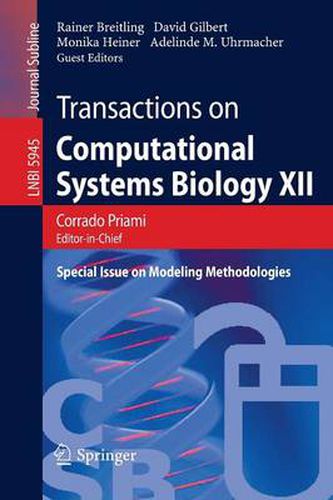Readings Newsletter
Become a Readings Member to make your shopping experience even easier.
Sign in or sign up for free!
You’re not far away from qualifying for FREE standard shipping within Australia
You’ve qualified for FREE standard shipping within Australia
The cart is loading…






This title is printed to order. This book may have been self-published. If so, we cannot guarantee the quality of the content. In the main most books will have gone through the editing process however some may not. We therefore suggest that you be aware of this before ordering this book. If in doubt check either the author or publisher’s details as we are unable to accept any returns unless they are faulty. Please contact us if you have any questions.
Inspired by the interesting contributions to the 6th Conference on Compu- tional Methods in Systems Biology (CMSB 2008) and the Dagstuhl Seminar 09091on FormalMethods inMolecular Biology inFebruary2009,papershave been selected for this special issue of the journal TransactionsonComputational Systems Biology, under the title Modeling Methodologies. The special issue starts with a position paper on Biomodel Engineering - from Structure to Behavior , which discusses the potential that concepts from traditional computing science hold for creating more powerful models of biol- ical systems and identi?es venues for challenging future research. The technical contributions of the special issue covera broadrangeof mod- ing methodologies that have recently been developed in computational systems biology. First,twonewmodelinglanguagesarepresented.The Attributed?-Calculus withPriorities presentsacombinationofaconcurrentprocesslanguage,i.e.,the ?-calculus, and a sequential core language, i.e., the ?-calculus; being equipped withprioritiesthelanguageenablesthedescriptionofdiversespatialphenomena, di?erent kinetics, as well as an individual-based and population-based modeling of biological systems. It is shown how the di?erent dialects of the ? calculus, including the pi@-calculus, can be expressed. Its stochastic semantic is ?rmly rooted in CMTC’s and is re?ected in the stochastic simulator.
$9.00 standard shipping within Australia
FREE standard shipping within Australia for orders over $100.00
Express & International shipping calculated at checkout
This title is printed to order. This book may have been self-published. If so, we cannot guarantee the quality of the content. In the main most books will have gone through the editing process however some may not. We therefore suggest that you be aware of this before ordering this book. If in doubt check either the author or publisher’s details as we are unable to accept any returns unless they are faulty. Please contact us if you have any questions.
Inspired by the interesting contributions to the 6th Conference on Compu- tional Methods in Systems Biology (CMSB 2008) and the Dagstuhl Seminar 09091on FormalMethods inMolecular Biology inFebruary2009,papershave been selected for this special issue of the journal TransactionsonComputational Systems Biology, under the title Modeling Methodologies. The special issue starts with a position paper on Biomodel Engineering - from Structure to Behavior , which discusses the potential that concepts from traditional computing science hold for creating more powerful models of biol- ical systems and identi?es venues for challenging future research. The technical contributions of the special issue covera broadrangeof mod- ing methodologies that have recently been developed in computational systems biology. First,twonewmodelinglanguagesarepresented.The Attributed?-Calculus withPriorities presentsacombinationofaconcurrentprocesslanguage,i.e.,the ?-calculus, and a sequential core language, i.e., the ?-calculus; being equipped withprioritiesthelanguageenablesthedescriptionofdiversespatialphenomena, di?erent kinetics, as well as an individual-based and population-based modeling of biological systems. It is shown how the di?erent dialects of the ? calculus, including the pi@-calculus, can be expressed. Its stochastic semantic is ?rmly rooted in CMTC’s and is re?ected in the stochastic simulator.